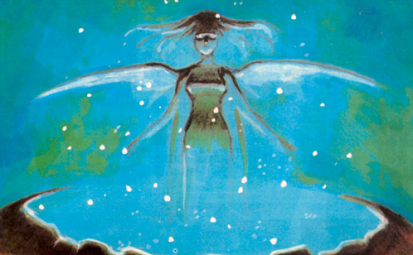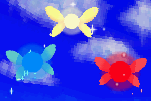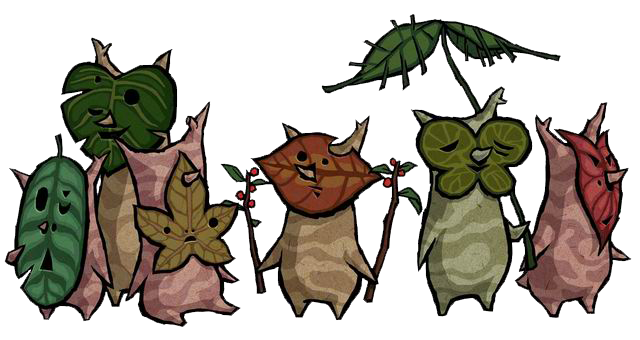The Hyrulian Pantheon: Spirits
Posted on June 27 2012 by Mases Hagopian
In every pantheon there are mystical creatures and spirits that exist outside of normal understanding. They are not races, per say, but rather, they are anomalies of nature. Sometimes they serve purposes, to guard certain things or places for example, or just to cause trouble. The Hyrulian pantheon also has these spirits present in its lore.
I do believe that there is a distinction between a race or creature and a spirit, and so do Zelda’s myths. Let’s use Greek mythology as a similar comparison to Hyrulian mythology on this subject.
Centaurs and Mermaids exist in Greek mythology, but they are shown to be rare creatures that live alongside humans and are sometimes encountered in the world. They are intelligent creatures, often with speech and evidence of intelligence to rival or surpass that of the human race, and have their own cultures and practices. They usually believe and pay homage to the same gods that the humans do. They are not spirits, but are rare races with their own culture existing within the same world and theological beliefs as the humans themselves. They are mystical in their way, but not specific spirits.
Similar creatures existing in Hyrulian mythology are the other races living in the country. The Gorons and Zoras are a good example. They are rarely seen by Hyrulians, but are intelligent beings who have their own cultures and believe in the same goddesses that the Hyrulians do.
What we are talking about in this article are the more divine creatures, those that do not live directly in the world, but seem to inhabit it for a purpose. Some examples of this in Greek mythology include the Harpies, the Sirens, and Cerberus, the three headed dog who guarded the gate to the underworld. I would also argue that the forest spirits, nymphs, and sprites should be included in this category as well.
There were four Harpies: Aello, Nicothoe, Oceypete, and Podarge. They were half woman, half carrion bird spirits who were known for stealing and general badgering. The Sirens were ocean spirits, said to be mermaid-like and female. They sang a song so tempting that they lured ships to their deaths on the rocks. Sources say that there are between two and five Sirens, and their names vary depending on which myth is being read. These names include but are not limited to: Thelxiepeia / Thelxiope / Thelxinoe, Molpe, Aglaophonos / Aglaope / Aglaopheme, Pisinoe / Peisinoë / Peisithoe, Parthenope, Ligeia, Leucosia, Raidne, and Teles.
 |
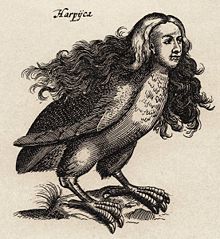 |
Hyrulian mythology talks about many such spirits, which will be discussed below in detail.
Fairies
Though specific fairies will be discussed here, fairies in general are a constant presence in Hyrulian myths. They usually exist to heal or revive fallen heroes, and congregate in pools of water called fairy springs. Some fairies only appear when it rains, and these are usually larger and more powerful than normal fairies. They can be directly summoned with the Song of Storms.
The Hyrulians sometimes sought to honor the fairy spirits by building shrines for them at these springs. Ocarina of Time has many such structures built around fairy springs, evidenced by the pillars and sculpture work seen there. Other myths, such as Twilight Princess and the Wind Waker, show no such grand structures around the sacred springs where fairies appeared. In Twilight Princess, this could be because the fairies were not released into the spring until the end of the myth as a result of the Hero’s actions in the cave of ordeals. In the Wind Waker, it could be because of the relative inaccessibility of fairy springs on the ocean.
Fairy Spirits (Ciela, Leaf, and Neri)
These three spirits are seen in Phantom Hourglass in the world of the Ocean King. Each fairy has a specific purpose and abilities.
Ciela is the Spirit of Courage, and is associated with light and time. Leaf is the Spirit of Power and is associated with fire and strength. Neri is the Spirit of Wisdom and is associated with water and defense. Each spirit awakens more as the hero collects their spirit gems, twenty for each, and they aid him in various ways on his journey.
Season Spirits
In Oracle of Seasons there is a fairy spirit for each season. The Spirit of Winter, the Spirit of Summer, and Spirit of Fall/Autumn, and the Spirit of Spring. They regulate the seasons in the world. The Hero is said to have worked with them in the land of Holodrum to defeat General Onox and save the world from terror.
Kokori/Koroks/Kikiwi
These friendly forest spirits have gone by different names in different myths. The first myth in which they appeared was Ocarina of Time, where they were called the Kokiri and raised the hero from infancy until the time he embarked on his destined adventure.
These forest spirits have a few common attributes, despite their different appearances, locations, and names. They always live in the forest, being forest spirits, and are watched by the Deku Tree (see the Guardians article for more information on the Deku Tree). Some myths say that the Deku Tree created them and is their father figure. They are able to change their shape, depending on what form the Deku Tree feels most effective for the times they are living in.
The Kokiri took the forms of Hylian children dressed in green tunics. Each Kokiri had a guardian fairy who partnered with him or her for life. One of their number, Saria, was the Sage of Forest in that myth. In this myth, they were shown to be interested in sword play and songs and acted very much like children at play.
The Koroks, first appearing in the Wind Waker, looked like little tree people. They lived on a set of two tree-based islands and served the Deku Tree. Their songs were given a purpose beyond just fun, as they were used in ritual dances involving the Deku Tree’s seeds. They were also shown to be interested in potion making from certain forest seeds. One of their number, Makar, becomes the Sage of Wind whose prayers in the Wind Temple power the Master Sword. Their dream is for the Deku Tree seeds they plant to one day cover the great ocean and form a new continent from the sea.
In Skyward Sword there is an interesting race called the Kikwi. They are part-plant, part-animal creatures that live in the forest beneath a tree called the Great Tree. The Great Tree does not appear to have intelligence of its own and therefore is not, at this point, a candidate to become the Great Deku Tree later, but the similarities are uncanny. The names are the biggest similarity—Kokiri and Kikwi, Great Deku Tree and Great Tree—as well as where they live and their child-like demeanor. This way of behaving like children is a characteristic trait of both the Kokiri and the Koroks.
These facts lead many to think that the Kikwis’ encounter with the hero of Skyward Sword led them to take on a similar appearance in Ocarina of Time. Some also think that the planting of the Tree of Life seed in the fertile soil of the Sacred Grounds leads to its growth into a sentient being later known as the Deku Tree. These theories are pure speculation and there are little facts to support them.
Skull Kids
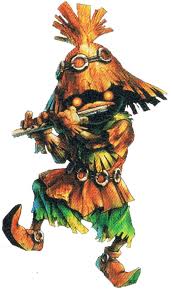 The following three spirits would better fall in the Evil Gods article, but their overlap with common Hyrulian beliefs and customs leads me to put them here. Whether or not there is an evil presence in the world, these creatures always exist.
The following three spirits would better fall in the Evil Gods article, but their overlap with common Hyrulian beliefs and customs leads me to put them here. Whether or not there is an evil presence in the world, these creatures always exist.
That said, the first spirits we will discuss are the Skull Kids. These spirits are the dark forest spirits who live in the Lost Woods. Not to be confused with Skull Kid himself, who was a specific Skull Kid who got himself into a lot of trouble in Majora’s Mask, they are spirits of children who got lost in the Lost Woods. These children lose their faces and don clothes made of leaves. For the rest of eternity they live in the Lost Woods, forever bound to it. Sometimes the Skull Kids are shown to be morose but friendly with a great interest in flute playing, and other times they are shown to be more mischievous.
Before we move on, let’s go back to Skull Kid from Majora’s Mask. He is not what he appears to be. He seems just like any other skull kid, but we discover in Granny’s story (confirmed when the giants speak with him at the end of the game) that Skull Kid is, in fact, immortal. He is the imp in the story who caused so much trouble for the people of Termina that his friends, the Giants, has to ban him from the land forever.
He is a very tricky character, like the mischievous Pan in Greek mythology. Whereas Pan was a god, specifically the God of mischief and the wild, Skull Kid is more of a spirit. An immortal spirit, but a spirit nonetheless. He doesn’t quite qualify for either the position of god or the role of the trickster in Hyrulian mythology.
Stalfos/Stalchildren

 Stalfos and Stalchildren are very similar to Skull Kids, but different in appearance. They look like walking skeletons of various size depending on the age and size of the Hylian who was lost. The Kokiri say that any adult who is lost in the Lost Woods becomes sick and turns into a Stalfos. Under the reign of Ganondorf, the Evil King, Stalfos take up armor and weaponry and go to war for him.
Stalfos and Stalchildren are very similar to Skull Kids, but different in appearance. They look like walking skeletons of various size depending on the age and size of the Hylian who was lost. The Kokiri say that any adult who is lost in the Lost Woods becomes sick and turns into a Stalfos. Under the reign of Ganondorf, the Evil King, Stalfos take up armor and weaponry and go to war for him.
Stalchildren come out of Hyrule field at night. There are a few theories about why they show up, but nothing conclusive. It is possible that they are the spirits of children who are lost in Hyrule Field, like the Stalfos in the woods. Oddly, under the reign of Ganondorf in the future of Ocarina of Time, the Stalchildren disappear and are not seen again.
Poes
 Most poes are evil spirits, ghosts of Hyrulian mythology and more like one of Ganondorf’s monsters. This would make them pointless to talk about, however a couple specific poes lead me to believe that there is more to these spirits than merely Ganondorf’s evil power.
Most poes are evil spirits, ghosts of Hyrulian mythology and more like one of Ganondorf’s monsters. This would make them pointless to talk about, however a couple specific poes lead me to believe that there is more to these spirits than merely Ganondorf’s evil power.
 Sharp and Flat, the composer brothers of Hyrule, appear in two games as poes. For some reason, when they died they turned into poe spirits and haunted the land rather than simply dying or becoming Redeads. Further research shows that poes are the dead spirits of Hylians who harbored a lot of hate toward the world for whatever reason. This hate leaves their souls to wander the world in the form of a ghost holding a lantern, often hooded.
Sharp and Flat, the composer brothers of Hyrule, appear in two games as poes. For some reason, when they died they turned into poe spirits and haunted the land rather than simply dying or becoming Redeads. Further research shows that poes are the dead spirits of Hylians who harbored a lot of hate toward the world for whatever reason. This hate leaves their souls to wander the world in the form of a ghost holding a lantern, often hooded.
Their spirits reside in the light of the lantern, and upon being killed drop and are able to be bottled. In Majora’s Mask, however, we learn that if peace is brought to the hate-filled soul then the spirit will simply slip away into the afterlife. Poes are usually found in places of great death, such as graveyards or crypts, but can fixate upon other locations as well.
As you can see, Hyrulian mythology has its fare share of spirits as well, distinctly different from the creature races of Hyrule. These spirits serve various functions, and often directly interact with the people of Hyrule.
PREVIEW OF ARTICLE 8:
As hinted at here, not all of the gods in the Hyrulian pantheon are good. Some are evil, though the Evil Gods are more scarce than those of good. The next article will talk about these evil gods, and will discuss the huge impact of Skyward Sword upon them.




